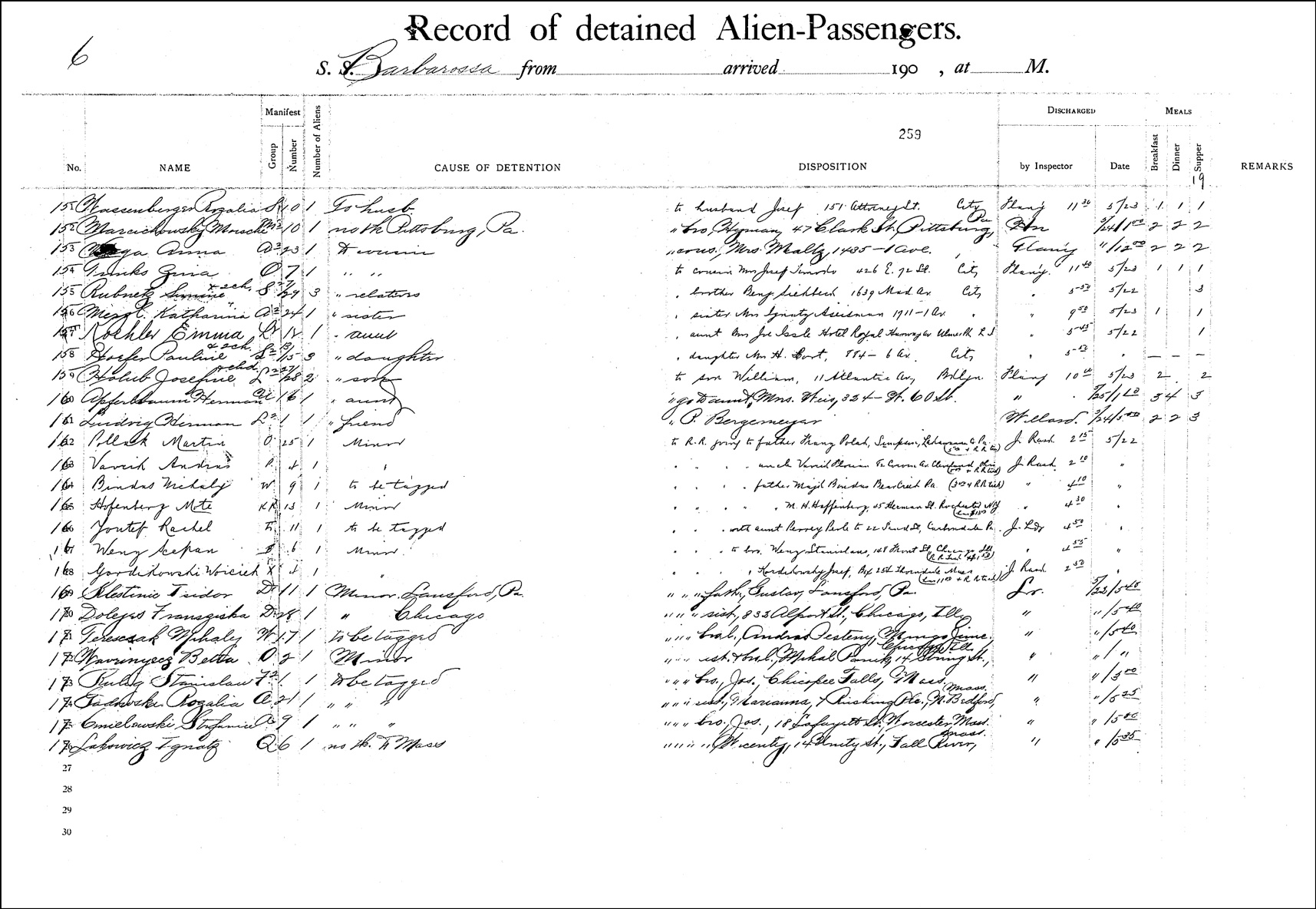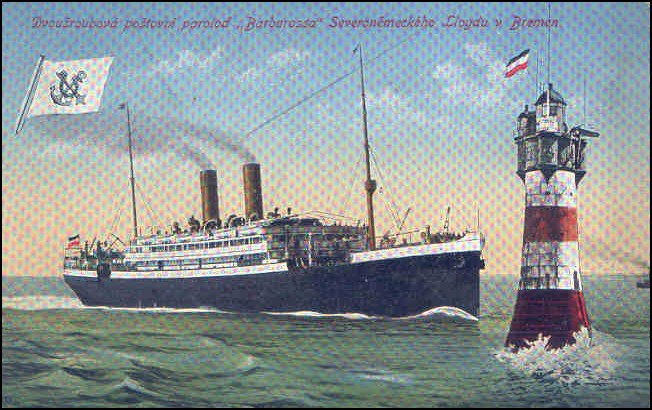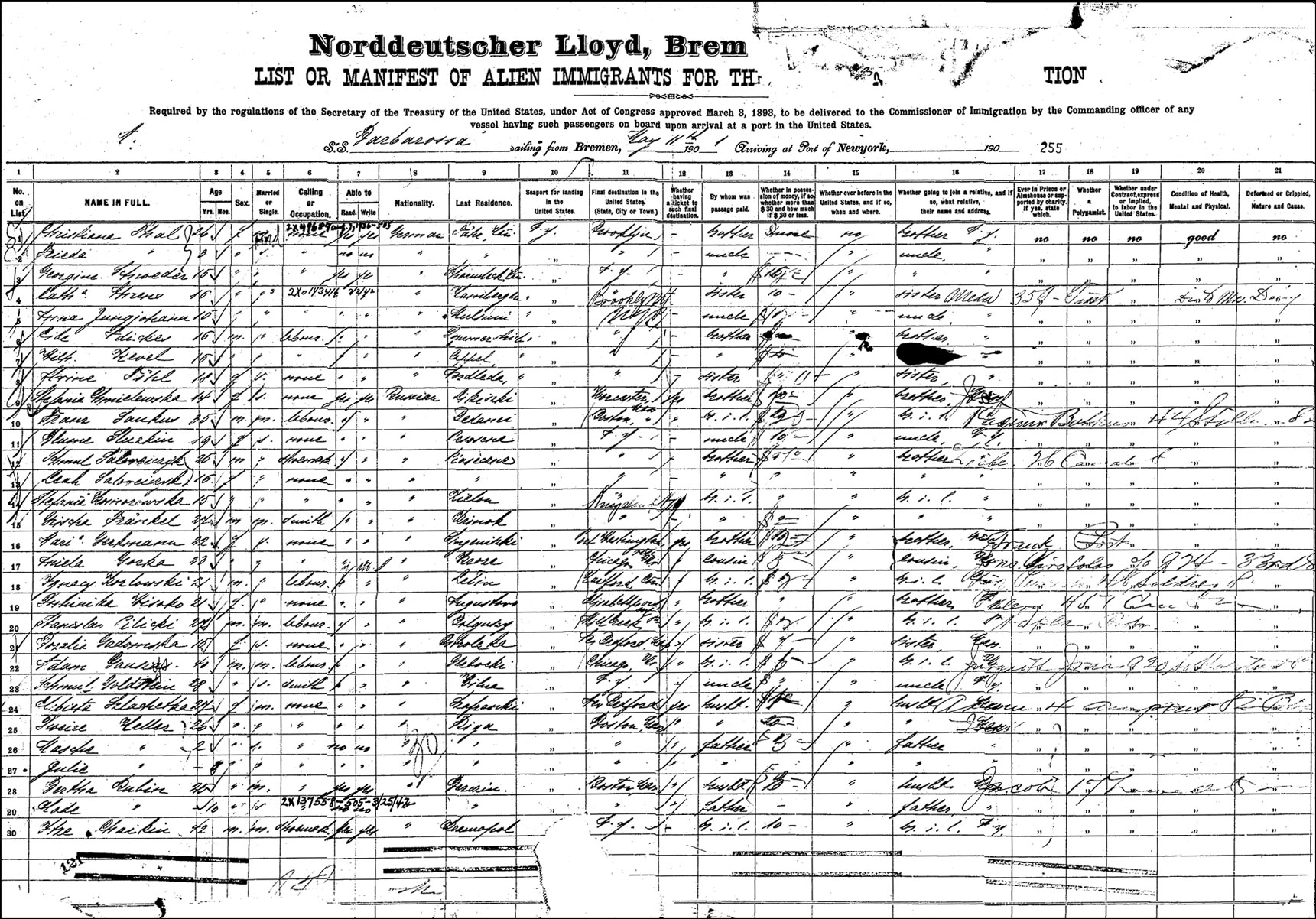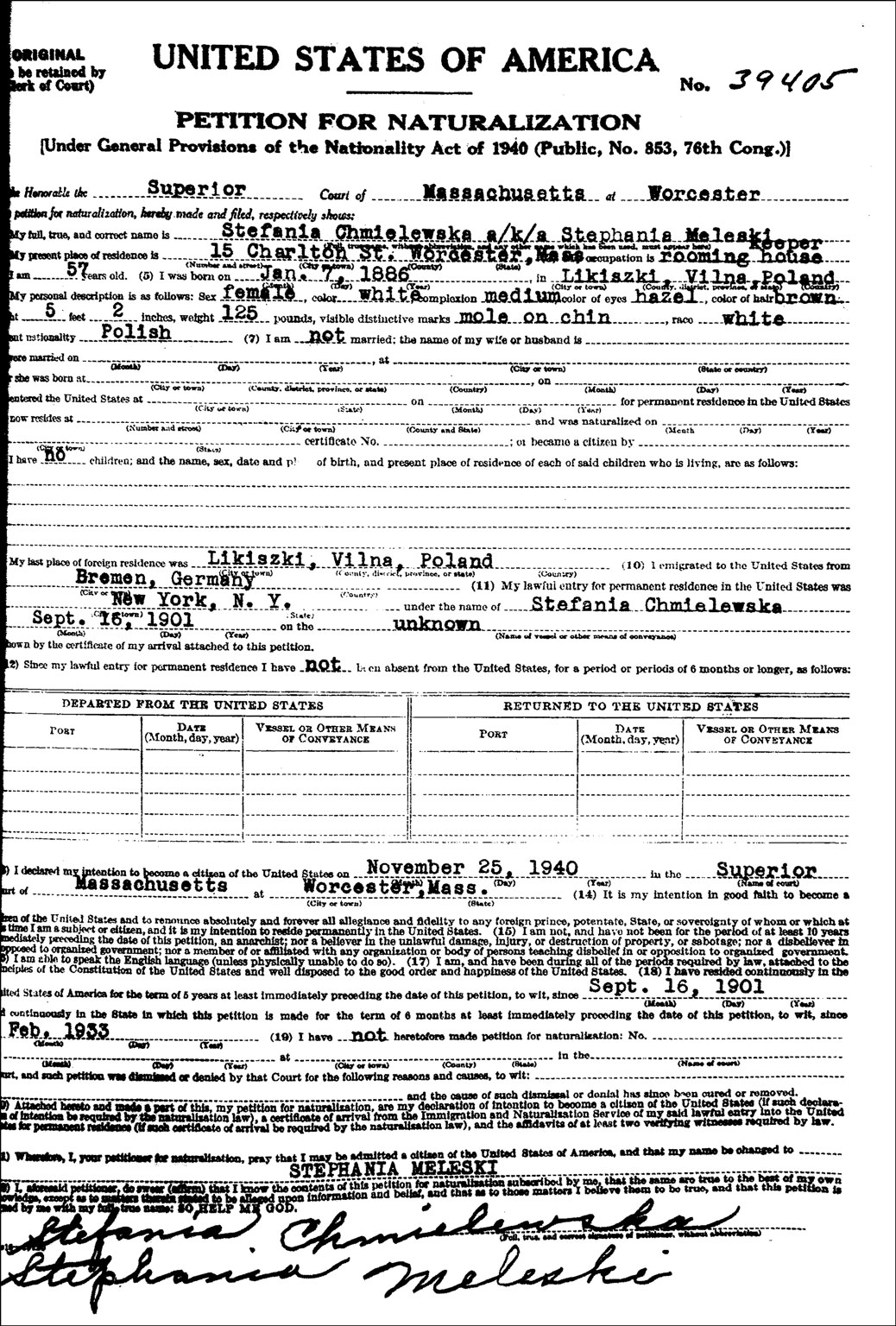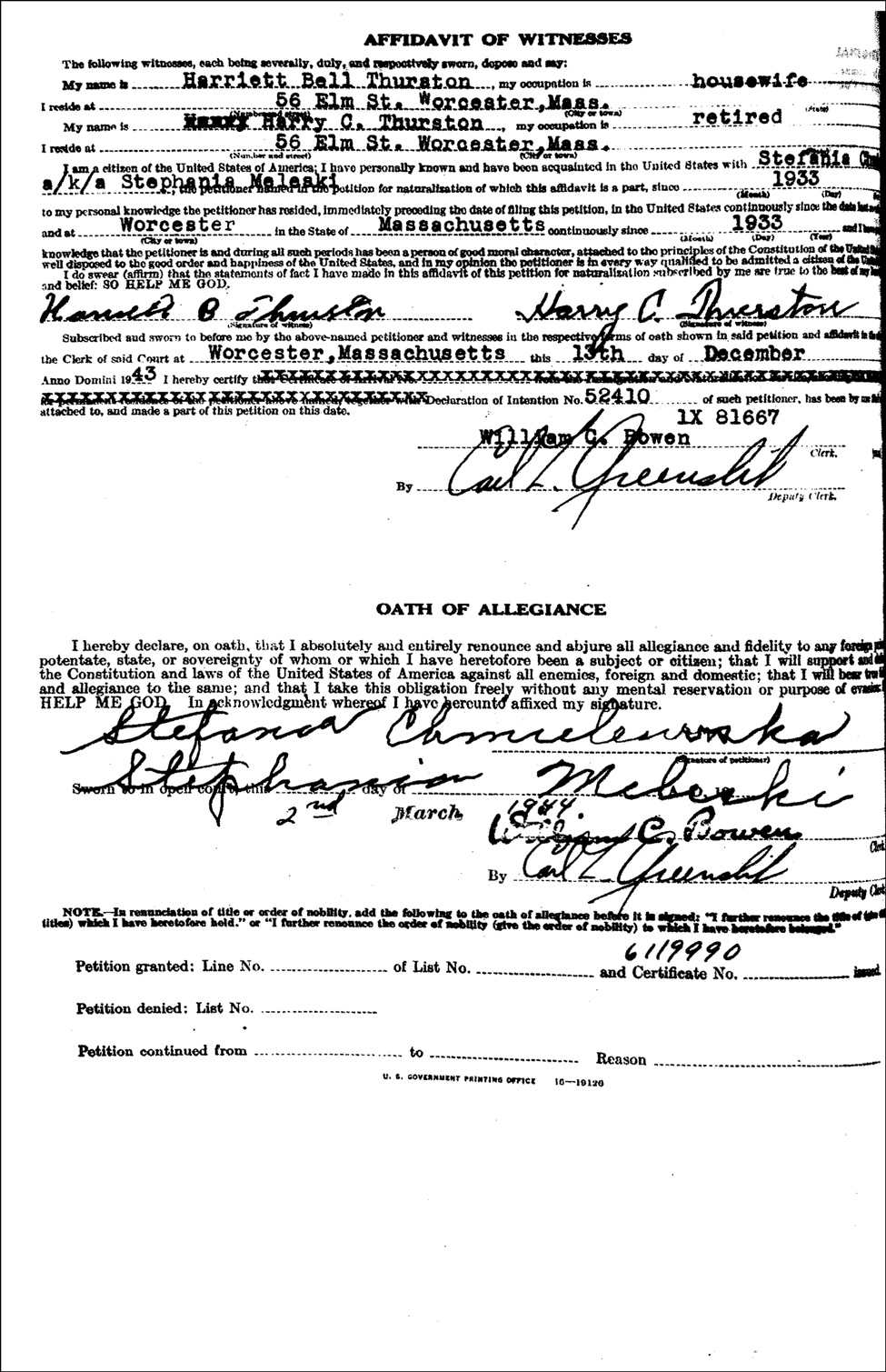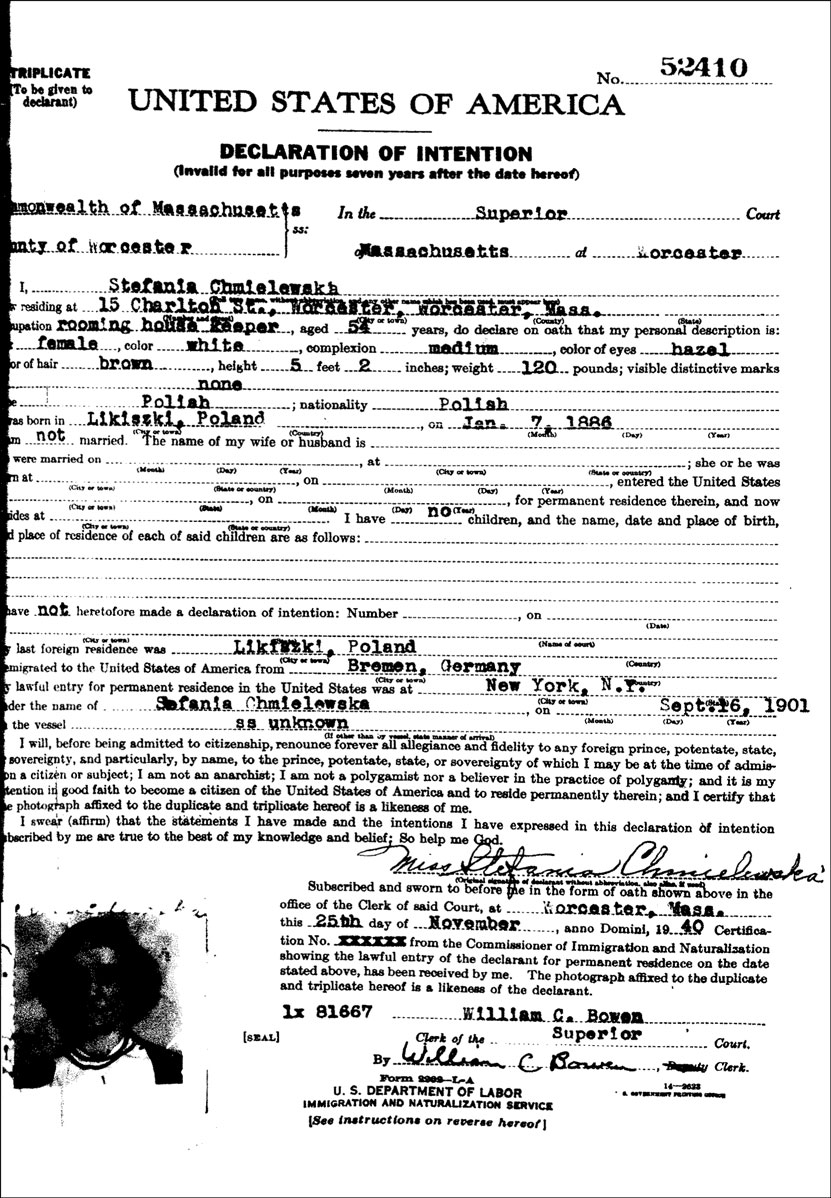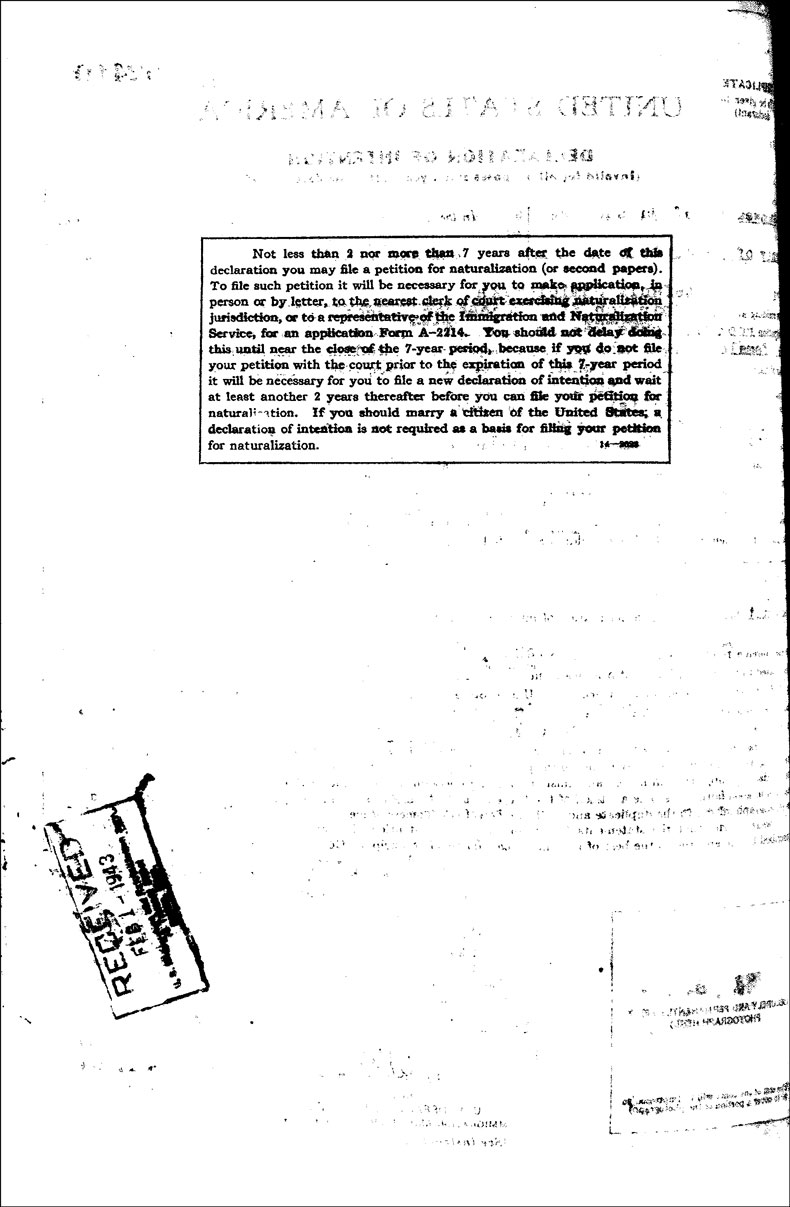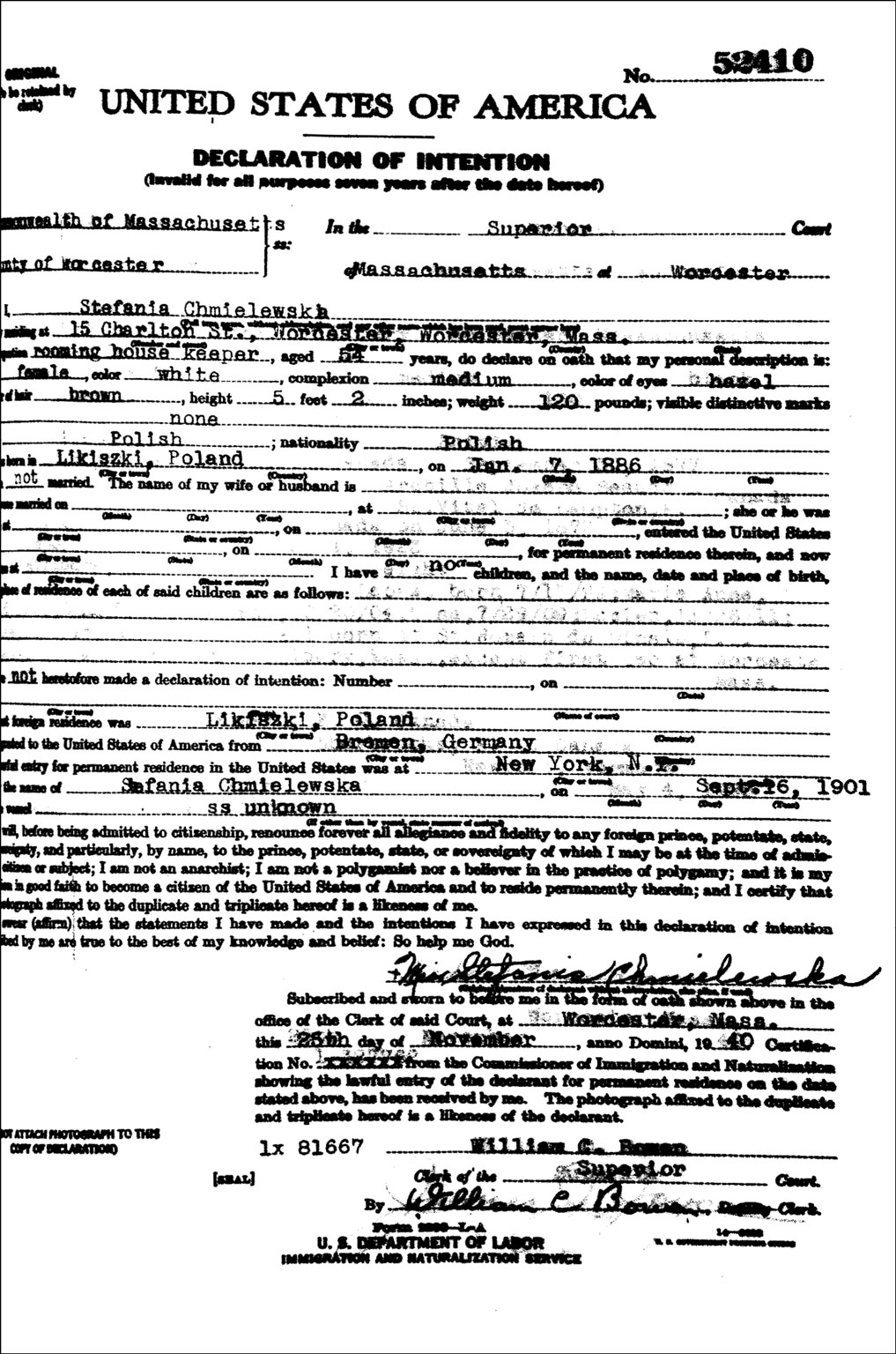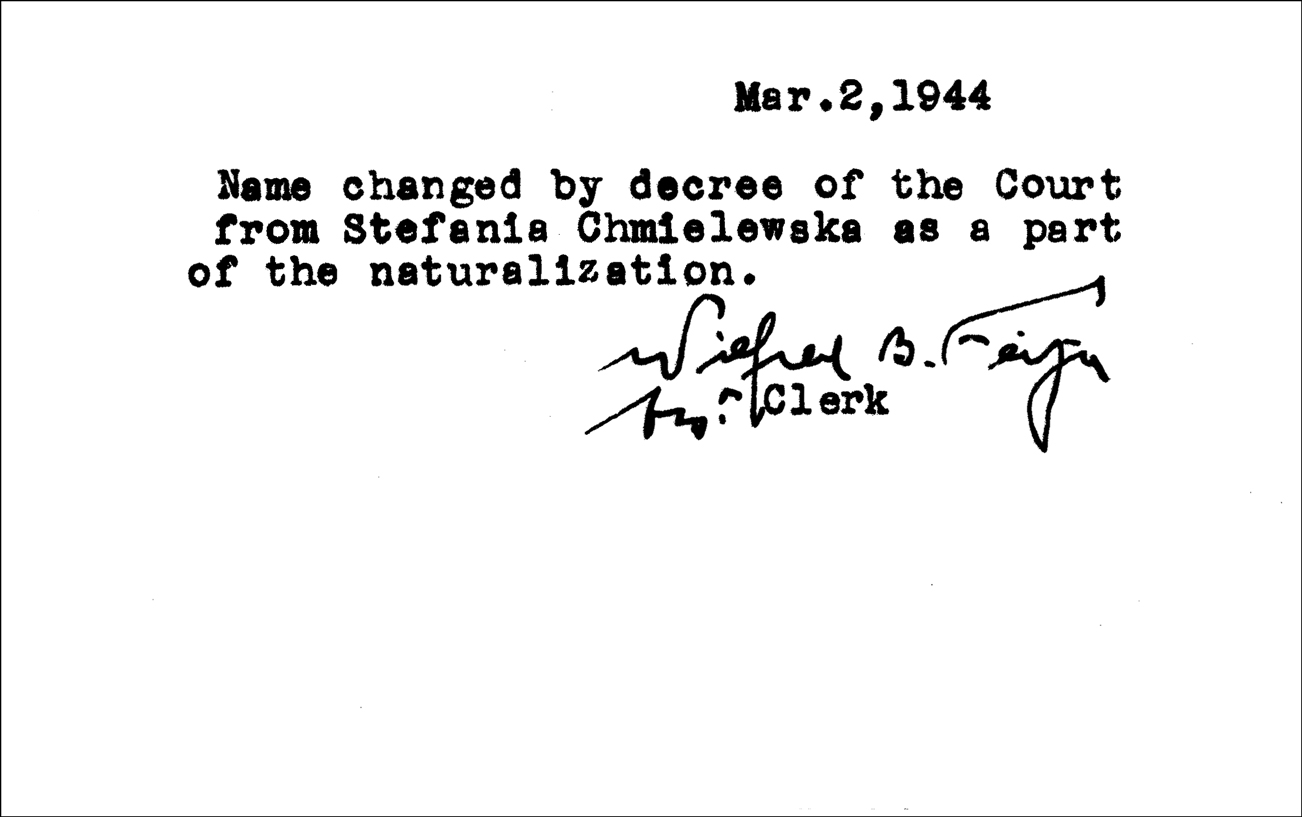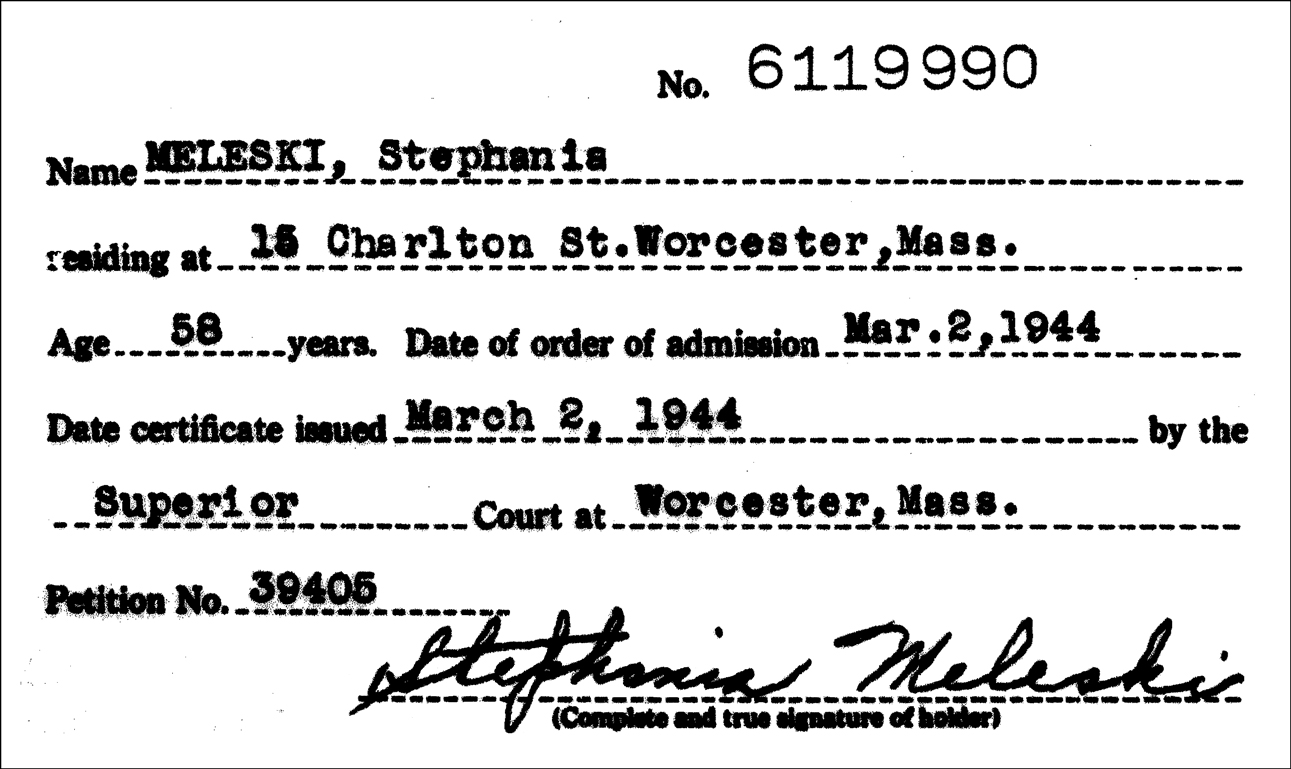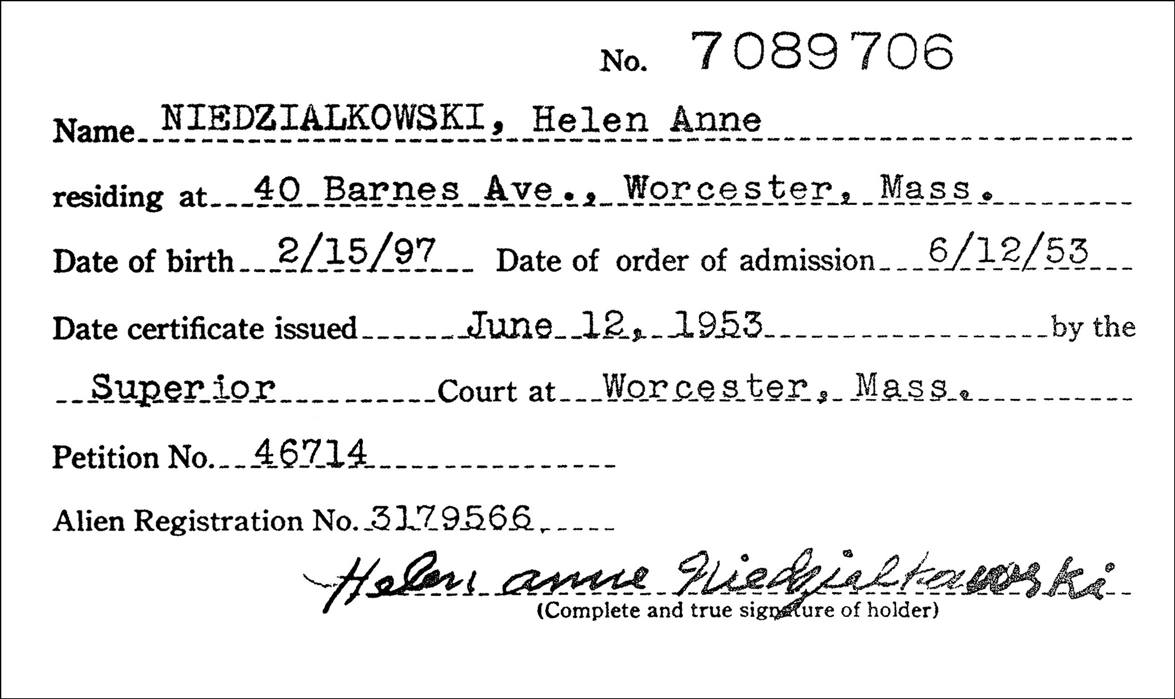After coming to a decision about how to define Original Source, Derivative Source, Primary Information, Secondary Information, Exact Image, and Original Record, it’s time to decide how some of the records I’ve collected on my Great Aunt Mary stack up.
Birth and Baptismal Record
Marianna’s Birth and Baptismal Record is an Exact Image of an Original Source. The record contains Primary Information on the dates and places of birth and baptism, the names and occupations of her parents, the names of her godparents, her sex, religion, and the fact she was legitimately born, the name of the midwife, and the name of the priest who performed the baptism. The record includes Secondary Information on the names and occupations of Mary’s grandparents.
SOURCE: Book of Births and Baptisms, 1884: entry 5, Church of the Immaculate Heart of the Most Holy Virgin Mary, Dubiecko, Poland.
Hamburg Emigration Record
Marjanna’s Hamburg Emigration Record is an Exact Image of an Original Source. The record includes Primary Information on the ship and date on which she emigrated, her sex and marital status, her former place of residence, her nationality, and her former occupation and position. Unless Marjanna provided some official proof of her age, the record includes Secondary Information on her age. While she was certainly present at her own birth, she certainly would not have remembered the event itself . Moreover, the emigration record was not generated at or near the time of her birth.
SOURCE: Marjanna Danko entry; SS Kaiserin Auguste Victoria, June 16, 1909, line 830; in Hamburg Emigration Lists 1850-1934, Volumes 209-211, Direct Lists, microfilm 473,001, Family History Library, Salt Lake City, Utah.
Passenger Arrival List
Marianna’s Passenger Arrival List is an Exact Image of an Original Source. Most of the information in this record is Primary Information, including the name of the ship, the ports and dates of departure and arrival, Marianna’s former occupation, her nationality, her former place of residence, her intended destination, and her height, weight, complexion, hair color, and eye color. Marianna’s age and place of birth are Secondary Information, unless she provided this information in some official record.
SOURCE: Marianna Danko entry; SS Kaiserin Auguste Victoria Passenger Manifest, June 26, 1909, page 36, line 4; Micropublication T715 (Washington: National Archives), roll 1293, frames 513-514.
The 1910, 1920, and 1930 Census
The 1910, 1920, and 1930 Census Records are Exact Images of Original Sources. Much of the information in this record is Primary Information, including address, inhabitants of the household, language spoken, occupation, and ownership of home. Secondary Information includes ages at the time of the census, ages at marriage, places of birth, year of immigration, and naturalization information.
SOURCE: Samuel Carsenberg household, 1910 U.S. census, Worcester county, Massachusetts, population schedule, city of Worcester, enumeration district 1880, supervisor’s district 119, sheet 6B, dwelling 39, family 98; National Archives micropublication T624, roll 632.
SOURCE: Paul Golinski household, 1920 U.S. census, Worcester county, Massachusetts, population schedule, city of Worcester, enumeration district 193, supervisor’s district 3, sheet 22A, dwelling 194, family 470; National Archives micropublication T625, roll 749.
SOURCE: Paul Golinski household, 1930 U.S. census, Worcester county, Massachusetts, population schedule, city of Worcester, enumeration district 14-23, supervisor’s district 8, sheet 1A, dwelling 3, family 3; National Archives micropublication T626, roll 968.
The Copy of Record of Marriage
Circumstances involved in preparing the Copy of Record of Marriage resulted in a complex situation. The original record was made at the time of the event, but was not transcribed into the ledger books in Barre, Massachusetts until sometime later. When the Copy of Record of Marriage was prepared, the information was once again transcribed onto the certified document.
The certified document is an Original Document, but is a Secondary Source. Much of the information in the record is Primary Information, since it originally was recorded at about the time of the event by someone in an official capacity. The information was transcribed twice, but when the information was transcribed, someone in an official capacity performed the task.
Thus, the names of the bride and groom, the occupations, the date and place of marriage, the number of marriage, the name of the officiant, and the date of the original record are probably Primary Information. The ages, places of birth, and the names of the parents of the bride and groom are Secondary Information.
Given that this record was transcribed twice, the Secondary Information and even the Primary Information is somewhat suspect. I know from other records that the names of the groom’s parents and the name of the bride’s mother are misspelled in this record . The name of the bride’s father is written as Joseph Jacob Danko, indicating that the recorder incorrectly transcribed the father’s first name, immediately recognized the error, and then just crossed out the error and continued. This is a certified marriage record?
SOURCE: Copy of Record of Marriage, October 4, 1915, Barre, Massachusetts, register no. 23, vol. 633, page 358, Massachusetts Registry of Vital Records and Statistics, Dorchester, Massachusetts.
Copyright © 2006 by Stephen J. Danko


